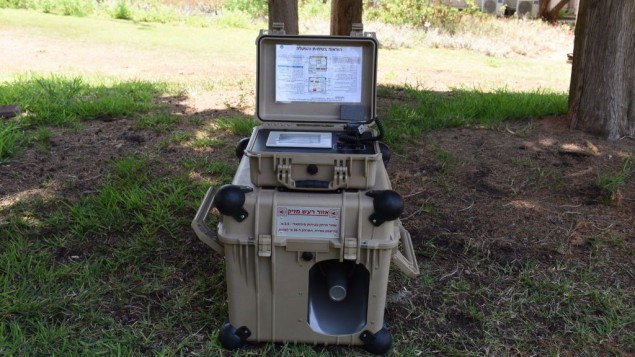When an incoming rocket siren goes off, Israelis know the drill: rush to the nearest shelter or, if you’re on the road, lie face down with your hands protecting your head.
What politicians refer to as a “drizzle” of rockets has become a commonplace in Israel’s south, though there is barely an area of the country that hasn’t experienced the threat of rockets at some point.
Before and during the seven-week 2014 Israel-Gaza conflict, the Hamas rulers of the Strip fired thousands of missiles into Israeli communities. The Lebanon-based terror group Hezbollah has targeted the north of the country with rockets as well.
When a rocket penetrates into Israeli territory, sensors deployed along the borders, along with the Israeli Air Force, send out alerts that specify the source and type of the incoming threat. These alerts set off alarms around the country, whereupon citizens get instructions via TV, radio and their smartphones to enter the nearest shelters.
Now the IDF’s Home Front Command, in charge of civilian protection, is upgrading its siren system to allow it to be more selective about who it alerts and instructs to take shelter during a rocket attack.
Among the new developments being deployed is a mix of portable siren systems that can be attached to loudspeakers in public places, such as train stations, schools and malls, and private homes, to provide an extra layer of warning. An additional system, already in place, is a mobile siren system that can be deployed in fields or areas previously not covered by the alarms.

IDF’s new portable Nofar siren that can be attached to loudspeakers in public places (IDF Spokesperson Office)
So, if once inhabitants of relatively large swaths of land were sent scuttling for cover, now the alarms will sound only in the specific areas targeted by the rockets, said Lt. Col. Yehudit Halifa, the head of the Home Front Alert Branch in the IDF. Prior to 2014 Israel was divided into 300 regions by the Home Front, while the new technology divides the countries into 3,000 sections, thus allowing for a smaller population to be mobilized by the alarms.
“We will be able to alert at the resolution of single cities, down to as much as a square kilometer,” Halifa said in an interview. “The system supports selective alerts, and we are now deploying the systems around the country.”
The fully automated system can also support various languages, like Russian or Amharic, so for example Amharic radio stations will automatically instruct listeners, in Amharic, to enter the shelters.
The new system was developed jointly by the “best of the brains” in the army jointly with civilian firms, Halifa said. In the future, these systems could be used to warn against other threats, such as earthquakes, and even distinguish automatically between various kinds of threats.
“This kind of alert doesn’t exist at the moment; we are working on it,” she said.








